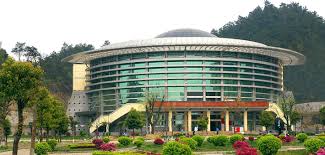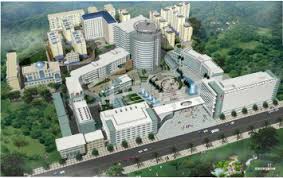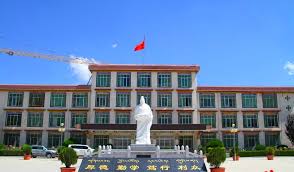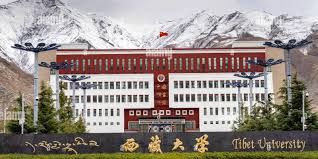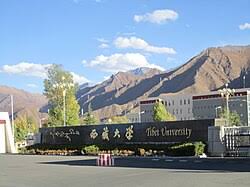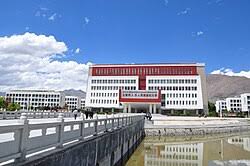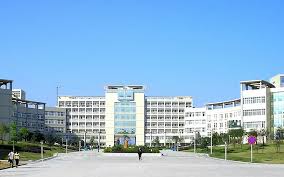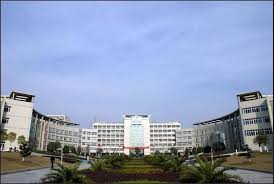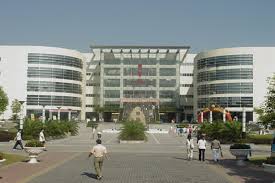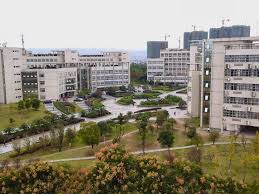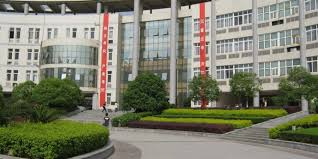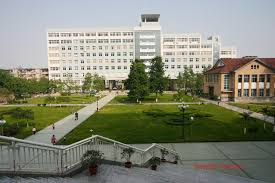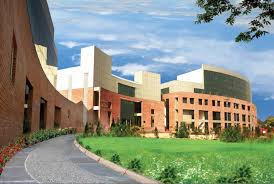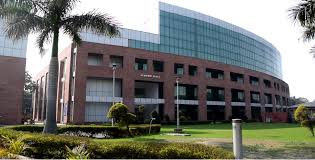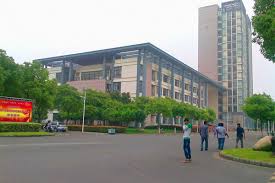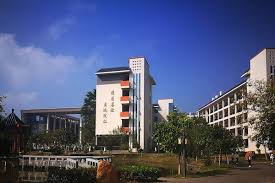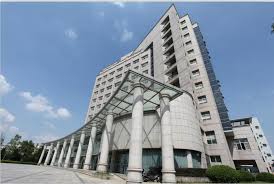Hubei University of Medicine, situated in the center of Shiyan—a “Top Ten Charming City” in China—is one of China’s most prominent institutions with a specialized emphasis on Western medicine. Founded in 1965 and renamed in 2010, it has undergone drastic changes and was authorized to award master’s degrees in 2013. It was included in Hubei Province’s “Double First-Class” program in 2018.
About Hubei University of Medicine
The university consists of 16 secondary colleges, providing 26 undergraduate majors, including 3 national and 10 provincial first-class majors. It currently has 12,144 full-time undergraduate students, 1,544 postgraduates, and 307 overseas students, having educated more than 120,000 medical professionals, including an outstanding member of the Chinese Academy of Engineering. The university has a faculty of 1,338 members, including 951 master’s supervisors, 599 senior professional titles, and 461 doctoral degrees.
The university has 11 provincial excellent teaching teams, 17 grass-roots teaching organizations, and more than 100 national and provincial-level talents. Its Clinical Medicine and Pharmacology And Toxicology disciplines are ranked in the top 1% worldwide in the ESI index, indicating good research performance. The university has three first-level master’s disciplines, 10 professional degree authorizations, and 24 provincial and ministerial research platforms. It has guided more than 3,000 research projects, won 63 honors, secured 493 patents, and authored over 2,700 high-impact academic papers.
With a presence in 7 major hospitals that together provide more than 15,000 beds and treat millions of patients every year, it offers comprehensive clinical training opportunities through 50+ teaching and internship hospitals. Globally, the university has collaborations with institutions such as the National University of Singapore, has hosted 164 scholars, brought in 10 foreign experts, and taken close to 600 students and faculty members overseas for training and academic exchange.
Hubei University of Medicine – Table of Contents
- About
- Advantages
- Ranking
- Departments And Course Duration
- Facilities And Infrastructure
- Fee Structure
- Required Documents
- Eligibility Criteria
- Admission Process
- Benefits
- Privileges And Benefits for Indian Students
- FAQ’s
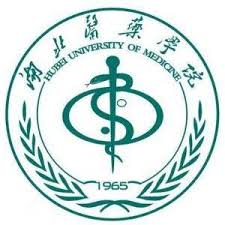
Advantages of Studying in Hubei University of Medicine – China
1. Affordability:
In comparison to medical universities in the US, UK, or Australia, HUM has significantly lower tuition fees. The cost of studying MBBS in China can be as much as 60-70% lower than in other Western nations.
2. Strong Academic Reputation:
HUM is an excellent clinical medicine university in China. It has 55 years of history with a vast number of students, including foreign students. The university offers a multidisciplinary education system with special emphasis on clinical medicine.
3. Access to Affiliated Hospitals:
HUM possesses many affiliated hospitals, such as Dongfeng Hospital, People’s Hospital, and Xiangyang Hospital, which are renowned as top-grade medical institutions. These hospitals give students good practical experience and clinical training.
4. Research Opportunities:
HUM has many research projects and maintains more than 10 provincially or nationally certified laboratories. The university made major contributions to developing medical science, and research papers were published in top-class journals such as SCI, EI, and ISTP.
5. English as a Teaching Language:
English is employed as the language of teaching at HUM, hence making it convenient for foreign students. There also exist courses and programs at the university that award internationally accepted higher education degrees.
6. Scholarships and On-Campus Accommodation:
HUM offers on-campus accommodation for students. The university also presents various scholarship options to fund students.
Hubei University of Medicine – China Ranking
Hubei University of Medicine (HUM), with its roots in Hubei Province and emphasis on the overall Midwest area of China, is committed to the development of medical talents with strong moral character, sound theory, excellent practice, and innovative spirits. The university focuses on undergraduate education with balanced development of postgraduate, continuing, and international education.
Presently, HUM has around 8,000 students and provides 12 undergraduate majors in fields like clinical medicine, nursing, anesthesiology, medical imaging, pharmacy, medical laboratory science, dentistry, rehabilitation therapy, biomedical science, pharmaceutical engineering, public administration, and information management systems—fields that span medicine, science, engineering, and management.
Anesthesiology and Nursing are identified as National Distinguished Specialties under Construction and Hubei Provincial Brand Specialties among them. Stomatology, Pharmacy, and Clinical Medicine are also known as provincial brand disciplines. The university is a model for some national and provincial education reforms, such as the Ministry of Education and Ministry of Health’s pilot programs for medical talent training reform and free medical education for rural students. Pharmacy (Chinese Medicine Production) has been listed as one of the National Pilot Projects of comprehensive reform in specialties and is included in the Hubei Strategic Emerging Talent Training Program.
Clinical Medicine and Nursing are pilot programs under the Provincial Comprehensive Reform Project for Specialties. HUM has three Provincial Experimental Teaching Demonstration Centers, namely the Basic Medicine and Clinical Skills centers for all medical students, an English Language Learning Center for non-English majors, and two Provincial Excellent Teaching Teams (Anesthesiology and Basic Medicine Experiment) and seven Provincial Excellent Courses like Human Anatomy, Internal Medicine, Physiology, and Clinical Anesthesiology. With its motto “Integrity, Diligence, Veracity, and Creativity,” HUM prioritizes excellence and innovation in education, personalized teaching, and application. The university supports students in expanding their fields of study by taking up minor programs or second degrees.
It operates five hospitals that are all ranked at the highest Level 3, including Taihe Hospital, recognized nationwide for its excellence, and Dongfeng Hospital, one of the earliest to be approved to carry out assisted reproductive technology. Xiangyang Hospital is a member of the International Emergency Aid Network and functions as a training base for general practitioners, whereas Suizhou Central Hospital is a highest-rated provincial hospital. Combined, these two hospitals provide 7,500 beds and treat more than 6 million outpatients and 240,000 inpatients per year. The university also has a single national and 30 provincial key disciplines and 43 teaching and practice hospitals with affiliation, all of which are Level 3-A, providing strong clinical training and the provision of high-quality medical education.
Latest Notifications:
Departments And Course Duration in Hubei University of Medicine – China
MBBS Program at Hubei University of Medicine (HUM) Hubei University of Medicine offers a Bachelor of Medicine and Bachelor of Surgery (MBBS) program designed to train international medical students in clinical knowledge, practical skills, and humanistic medical ethics to meet global healthcare demands. The program is delivered in English and adheres to the standards set by the Ministry of Education of China and WHO guidelines.
Course Duration
The MBBS program at HUM spans 6 years, structured as follows:
Years 1–2: Basic Sciences and Foundation Courses Includes courses in anatomy, physiology, biochemistry, microbiology, pathology, pharmacology, and basic Chinese language And culture (for communication in clinical settings).
Clinical Medicine and System-based Learning Includes clinical subjects such as internal medicine, surgery, gynecology And obstetrics, pediatrics, community medicine, forensic medicine, and diagnostics. Advanced Clinical Training Focused on intensive clinical exposure and rotations in university-affiliated hospitals under expert supervision. Clinical Internship (Compulsory) One year of hands-on training in HUM’s affiliated hospitals, including Taihe Hospital and Dongfeng Hospital. This includes rotations across departments like Internal Medicine, Surgery, Pediatrics, Obstetrics And Gynecology, and others.
Departments Involved in MBBS Program
The MBBS program is taught and supported by several key departments and faculties:
1. Department of Basic Medical Sciences
- Human Anatomy
- Histology and Embryology
- Biochemistry
- Physiology
- Microbiology and Immunology
- Pathology
- Pharmacology
2. Department of Clinical Medicine
- Internal Medicine (Cardiology, Gastroenterology, Respiratory Medicine, etc.)
- General Surgery
- Orthopedics
- Pediatrics
- Obstetrics And Gynecology
- Psychiatry
- Dermatology
- Ophthalmology
- ENT (Otorhinolaryngology)
3. Department of Diagnostic Medicine
- Imaging and Radiology
- Clinical Laboratory Diagnostics
- Ultrasonography
4. Department of Public Health and Preventive Medicine
- Community Medicine
- Epidemiology
- Environmental Health
5. Department of Traditional Chinese Medicine
- Offers electives to help students understand Chinese medical practices
6. Department of Medical Humanities
- Medical Ethics
- Psychology
- Communication Skills
- Medical Chinese (for international students)
Facilities And Infrastructure in Hubei University of Medicine – China
Campus Overview
Campus Size: The university spans over 1.17 million square meters, with 390,000 square meters dedicated to teaching and administrative purposes.
Library: HUM’s library boasts a collection of approximately 840,000 volumes, providing extensive resources for research and study.
Digital Infrastructure: The campus is the sole node for the China Education and Research Network (CERNET) in northwest Hubei, ensuring robust digital connectivity for academic pursuits.
Academic and Research Facilities
Teaching Demonstration Centers: HUM houses three Provincial Experiment Teaching Demonstration Centers, including the Basic Medical Experimentation Center and the Clinical Skills Center, which provides hands-on training for students.
Computer Center: Established in 1991, the Computer Center encompasses nine laboratories and is equipped with 536 computers, facilitating courses in software technology, hospital information systems, and more.
Information and Network Center: This center manages the university’s IT infrastructure, including network security, multimedia classrooms, and campus card systems, ensuring seamless digital operations.
Affiliated Hospitals
HUM is affiliated with five top-tier Level 3 hospitals, providing students with extensive clinical training opportunities:
Taihe Hospital: Recognized as a National Civilized Unit and home to the only Embryonic Stem Cell Research Center in northwest Hubei.
Dongfeng Hospital: A nationally ranked top 100 hospital, known for excellence in organ transplantation.
People’s Hospital: Certified as a 3-A Level Model Hospital and among the first approved for Assisted Reproductive Technology by the Ministry of Health.
Xiangyang Hospital: Part of the International Emergency Aid Network and serves as a General Practitioners Training Base.
Suizhou Central Hospital: Recognized as an Excellent Level-3 Hospital in Hubei. Collectively, these hospitals offer over 7,500 beds and handle approximately 6 million outpatient visits and 240,000 inpatient admissions annually.
Accommodation and Student Life
Hostels: International students are provided with comfortable on-campus accommodations, featuring air conditioning, internet access, study desks, and private bathrooms with 24-hour hot water.
Dining: Campus dining facilities offer a variety of local and international cuisines, catering to diverse dietary preferences.
Recreational Facilities: The university provides sports and recreational amenities to promote a healthy lifestyle among students.
Latest Updates:
Hubei University of Medicine – Fee Structure
Fee Structure Approximately 30lakhs to 40lakhs
Required Documents For Hubei University of Medicine – China
- Copy of the Passport.
- Copy of Mark sheets and passing certificates of 10th and 12th class.
- Copy of offer letter
- Birth certificate
- Medical certificate
- 10 Passport size photographs
- The Ministry of External Affairs authorizes all the documents.
- Visa fees
- HIV test documents and results
- NOC from the Public Authority
- Address Proof
- Bank statement of parents or guardians
- Health Insurance
- Covid19 Report
Official site For Hubei University of Medicine: Click Here
Eligibility Criteria For Hubei University of Medicine – China
- They should have Physics, Biology, and Chemistry as the main subjects of study at the 10+2 level.
- The applicant must have a non-china nationality.
- The age of the applicant must be a minimum of 17 years and maximum of 30 years.
- The applicant must have a good track of academic records.
- The student must be fluent in the English language.
- Students must have completed 10+2 of their education or any equivalent education with a minimum 50% aggregate marks.
Admission Process For Hubei University of Medicine – China
- Apply on the official portal of the college.
- Fill the admission form on the online portal.
- Send the scanned copies of the documents.
- Get the offer letter and keep it safe for future use.
- Pay registration fees for your desired college.
- Apply for the visa after you have paid the college fees and received the confirmation letter.
- Get the visa to study in China.
- Book a flight to China.
- Fly to China and start attending your lectures.
Benefits of Studying in Hubei University of Medicine – China
1. Government Recognition And Global Recognition
WHO-listed and recognized by the Ministry of Education of China, HUM is eligible for FMGE/NExT (India), USMLE (USA), PLAB (UK) and other licensing exams. Approved by the National Medical Commission (NMC) for Indian students.
2. Strong Medical Curriculum
Offers a 6-year MBBS program (5 years academics + 1 year internship). Focuses on clinical-oriented, practical, and hands-on training. Anesthesiology and Nursing are National Distinguished Specialties; Clinical Medicine, Pharmacy, and Stomatology are Hubei Provincial Brand Disciplines.
3. Excellent Clinical Exposure
Affiliated with 5 top-tier Level 3 hospitals (like Taihe Hospital and Dongfeng Hospital). Over 7,500 beds and 6 million outpatient visits annually, giving students extensive real-time clinical experience. Internship available in China or home country (like India), based on regulations.
4. Advanced Infrastructure And Facilities
Well-equipped labs, simulation centers, English language learning centers, and smart Classrooms. 3 Provincial Teaching Demonstration Centers for practical medical education. Robust IT and computer infrastructure, including an Information And Network Center.
5. Affordable Tuition And Cost of Living
Lower tuition fees and living costs compared to private medical colleges in India or Western countries. Scholarships and financial support opportunities for high-performing students.
6. International Learning Environment
English-medium MBBS program. Welcomes students from 30+ countries, creating a diverse and multicultural campus. Supportive international student services and accommodation.
7. Research And Innovation Focus
Hosts the only Embryonic Stem Cell Research Center in northwest Hubei. Involved in national and provincial-level research programs.
8. Emphasis on Holistic Development
University encourages participation in sports, cultural events, student clubs, and community health programs. Opportunity to pursue double degrees or minors in other disciplines.
9. Career Opportunities
Graduates are eligible to apply for PG in India, USA, UK, Australia, Germany, and other Countries. Strong alumni network and clinical reputation help in global career placement.
10. Safe and Student-Friendly City
Located in Shiyan, a peaceful and educational hub in Hubei Province. Well-connected city with good climate and safe environment for students.
Get more details about the colleges in China: Click Here
Privileges And Benefits for Indian Students Hubei University of Medicine – China
1.NMC-Recognized MBBS Program
The MBBS program at HUM is recognized by the National Medical Commission (NMC) of India. This allows Indian students to appear for the FMGE (Foreign Medical Graduate Exam) or NEXT, enabling them to practice in India after graduation.
2. English-Medium Instruction
The MBBS course is taught entirely in English, ensuring Indian students can study without a language barrier. Additional support is offered to help students learn basic Chinese for clinical rotations, enhancing communication with patients.
3. Affordable Tuition Fees And Living Cost
Significantly lower tuition fees and cost of living compared to Indian private medical Colleges. Offers high-quality education at a fraction of the cost.
4. Strong Clinical Exposure
Clinical training in top-tier affiliated hospitals with over 7,500 beds. Exposure to real-time medical scenarios helps Indian students develop strong clinical skills essential for PG exams like NEXT, NEET-PG, USMLE, and PLAB.
5. Safe and Comfortable Hostel Facilities
On-campus hostels with modern amenities are available for international students. Separate accommodation for boys and girls, with Indian-style food available in some messes or nearby restaurants.
6. International Student Services
Dedicated international student office to assist Indian students with visa, residence permit, academic help, and emergencies. Regular cultural programs, festivals, and integration activities help Indian students feel at home.
7. Academic Support for Competitive Exams
Guidance and coaching available for Indian licensing exams like FMGE/NEXT. Study groups and mentoring by senior Indian students and faculty.
8. Globally Recognized Degree
The MBBS degree from HUM is recognized by WHO, ECFMG (USA), GMC (UK) and other medical councils globally. Eligible to pursue postgraduate studies abroad in countries like USA, UK, Australia, Canada, Germany, etc.
9. Student Exchange And Global Exposure
HUM has partnerships with international universities, allowing opportunities for exchange programs, research internships, and global medical exposure.
10. Active Indian Student Community
A vibrant Indian student community helps with peer support, cultural bonding, and academic collaboration. Celebrations of Indian festivals like Diwali, Holi, and Independence Day help maintain cultural connection.
FAQ’s
Is the MBBS program recognized by NMC (India)?
The MBBS program is listed by the World Directory of Medical Schools (WDOMS) and recognized by the National Medical Commission (NMC), making Indian students eligible to take the FMGE/NEXT exam.
Are there hostel facilities for Indian students?
Yes, separate hostel accommodation is provided for international students, including Indians. Rooms are well-equipped with Wi-Fi, attached bathrooms, and security.
Is the campus safe for international students?
Yes, the campus is safe and secure, with 24/7 security, CCTV monitoring, and a supportive international office.
Is Indian food available?
Yes, Indian food options are available in the university canteen or nearby restaurants. Students can also cook in shared kitchen facilities.
Can I take the FMGE/NEXT after graduating?
Yes, Indian graduates can appear for FMGE (now NEXT) after completing the MBBS at HUM.
Are scholarships available for Indian students?
Performance-based scholarships may be available after the first year. Some provincial or University-specific scholarships are also offered
Also Check:
